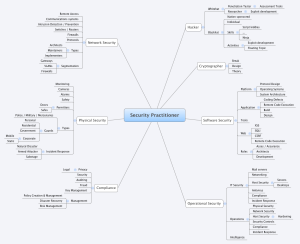Like it or not here it comes — within the next few months WebCrypto will be supported in various degrees across all mainstream browsers. There are plenty of posts out there talking about the security concerns of performing cryptography in the browser so I wont go into those here.
What I wanted to talk about was now that it’s here (mostly) what can we do with it? There will be those who say you do harm by making any claims about the assurances a web application makes relating to identity and confidentiality when WebCrypto is involved. The reality though is its happening and we should think about how we enable applications to use it responsibly.
This is why I started work on PKI.JS and ASN1.JS with Yuri Strozhevsky. Now that browsers have these basic crypto primitives available to them it is possible to build web applications that are interoperable with the security services used off the web, it is also possible to build new services on the web that simply were not possible before.
Now there have been libraries that that offered ASN.1 and PKI related capabilities (for example jsRSAsign, Forge and Lapo-asn1js) but none of these were complete and none built around WebCrypto as the source of crypto.
What Yuri and I set out to do is create a set of libraries that addressed these gaps and used public test suites (when available) to ensure conformance with the associated standards, including:
- X.509 and CRLs– RFC 5280
- CMS / PKCS 7 (Signed & EnvelopedData) – RFC 5652
- PKCS10 – RFC 2986
- PKCS8 – RFC 5208
- OCSP – RFC 6960
- Time-stamping – RFC 3161
For example for ASN.1 Yuri used his freely available test suite and for path building he tested against the PKITS test suite.
This of course does not mean the libraries are 100% compliant or defect free, in-fact I can promise you they are not but where test suites were clearly available we tried to utilize them so we would end up with a highly stable and standards compliant library.
At this point the libraries work in all modern browsers but only support signing, verifying, encrypting and decrypting in the Chrome dev-channel but in theory should work on Firefox nightlies as well. Unfortunately the profile and version of WebCrypto supported by Internet Explorer is outdated enough at this point these features do not work there at all yet.
These libraries have not yet been published to their public repositories but I expect them to be within the week under an BSD style license, to give some perspective on the size of this project I expect it to be just under 20,000 lines of code when released. It’s my hope that other people take this and build upon them so that the Internet has a browser friendly way to interact with these technologies.
NOTE: While I hate disclaimers like this but these libraries have not undergone any significant review please do not consider them production ready more work is needed before that’s the case.
NOTE: It’s also worth noting that until at least two browsers release their WebCrypto implementations as final products that these libraries may stop working or not work uniformly across browsers, for example at this time the nightly Chrome builds do nor support key exports which prevents implementation of the key storage structures.
P.S I actually miss spoke earlier, we did not end up include PKCS #12 in this version but most of the base structures are supported.


